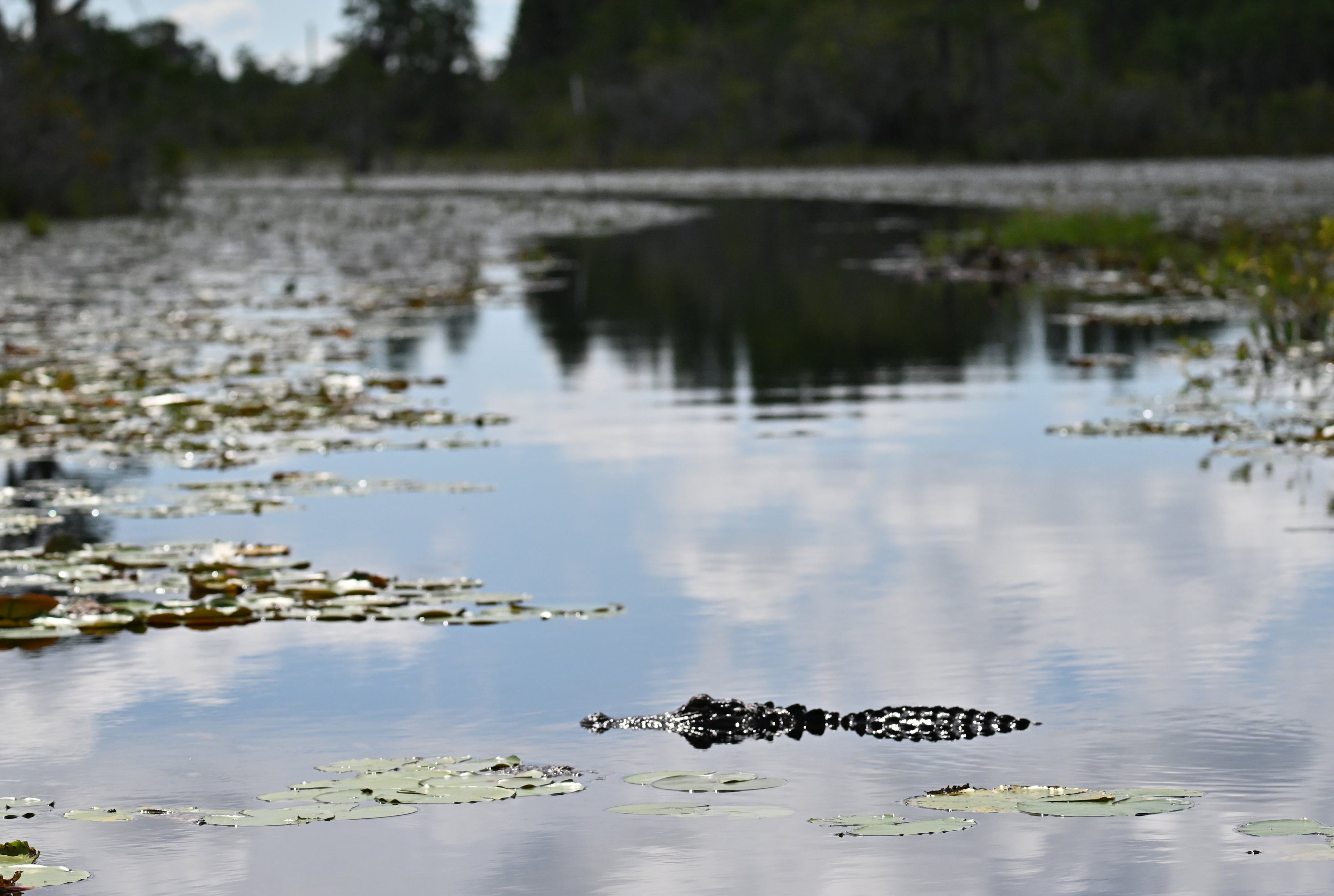After mine buyout, Okefenokee advocates call on Kemp to back swamp protection
Next year’s legislative session is still months away, but conservationists are already ramping up the pressure on Gov. Brian Kemp to support measures they say would permanently protect the Okefenokee Swamp from mining.
A group of Okefenokee advocates gathered in Liberty Plaza on Thursday across from the Georgia Capitol to outline priorities for the General Assembly next year — and convey their demands of Kemp.
They also delivered a petition to the governor’s office with more than 24,000 signatures calling for Kemp to protect the swamp, plus 300 Okefenokee-themed pieces of art created by children across Georgia. The groups behind the effort — which included the nonprofits Environment Georgia, Georgia Interfaith Power and Light, and the Georgia Student Swamp Coalition — gathered signatures through door-knocking and digital outreach.
“Bottom line: It’s time to end the threats to the Okefenokee once and for all,” said Jennette Gayer, the state director for Environment Georgia.
A spokesman for Kemp’s office said the governor has “always worked to ensure Georgia is a good steward of it bountiful natural resources while balancing the economic development opportunities and growth coming to communities statewide.”
The Okefenokee Swamp is the largest blackwater swamp in North America and one of the most-intact wetland ecosystems left on Earth. Home to thousands of kinds of plants and animals, including endangered and threatened species, it’s also been nominated for the UNESCO World Heritage List, a designation for the planet’s most outstanding natural and cultural sites.
Until this summer, a titanium mine was planned on the swamp’s eastern edge. It was a project Okefenokee advocates and many scientists feared was an existential threat to the ecosystem.
But in June, with financial support from some of the country’s preeminent private foundations, The Conservation Fund purchased the mining company’s land for $60 million, spelling an end to the project after a six-year fight.
Still, environmentalists say the swamp’s future is uncertain.
On its east side, the Okefenokee is flanked by a line of ancient sand dunes called Trail Ridge. Many scientists say the formation is critical to the swamp’s hydrology, but the dunes contain significant deposits of titanium-rich sands. The purest titanium can be used for aerospace parts and high-heat machinery, but the overwhelming majority would likely end up as titanium dioxide, a whitening agent found in toothpaste and paint, according to a U.S. Geological Survey report.
With tens of thousands of acres of Trail Ridge still privately owned, conservationists fear a new mine could be proposed any day. They urged Kemp to act to head off that possibility.
The groups say the governor should support House Bill 561, also known as the Okefenokee Protection Act. The measure introduced last session — and others like it in recent years — would prohibit state regulators from issuing, modifying or renewing any mining permits on Trail Ridge. The bill has enjoyed broad bipartisan support but has not advanced out of legislative committee.
Kemp’s spokesman declined to discuss HB 561, citing the office’s practice not to comment on proposed legislation.

Mackenzi Hallmark, a masters student at the University of Georgia and member of the Georgia Student Swamp Coalition, said Kemp should allocate funding to help conserve sensitive lands near the swamp. In addition to UGA, the coalition’s ranks include students from Georgia Tech, Georgia Southern, Georgia State, Emory University and several others.
“We are here to show Gov. Kemp today that advocating for the protection of the Okefenokee is advocating for the protection of Georgia,” Hallmark said.
The coalition also this month sent a letter to the Toledo Manufacturing Co., which owns several large tracts on Trail Ridge, asking it to pledge not to pursue mining on its land. Toledo’s president, Joe Hopkins, has maintained his interest in mining on Trail Ridge, but only, he has said, if it can be done without hurting the swamp.



